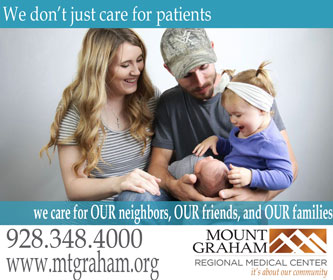Getting into a car accident is stressful enough without discovering the other driver lacks adequate insurance coverage. Unfortunately, millions of Americans drive with minimal or no insurance, leaving responsible drivers vulnerable to significant financial losses when accidents occur.
Understanding State Insurance Requirements
Every state except New Hampshire requires drivers to carry minimum liability insurance, but these requirements vary significantly across the country. Most states mandate coverage for bodily injury and property damage, though the minimum amounts often fall short of actual costs following serious accidents.
Liability Coverage Basics
Standard auto insurance policies include two primary components of liability coverage:
Bodily injury liability covers medical expenses, lost wages, and other damages when you injure someone in an accident. Many states require minimums as low as $15,000 per person and $30,000 per accident—amounts that can be quickly exhausted in cases involving serious injuries.
Property damage liability pays for repairs to other vehicles and property you damage in an accident. State minimums typically range from $5,000 to $25,000, which may not cover the full cost of repairing or replacing modern vehicles.
The Coverage Gap Problem
These minimum requirements were established decades ago and haven’t kept pace with rising medical costs or vehicle values. A single night in the hospital can easily exceed $15,000, while the average new car price now exceeds $45,000. When drivers carry only minimum coverage, accident victims often face substantial out-of-pocket expenses.
Financial Risks of Underinsured and Uninsured Drivers
Accidents involving inadequately insured drivers can create serious financial hardships for innocent victims. Understanding these risks helps illustrate why additional protection may be necessary.
Medical Expenses
Healthcare costs represent the most significant financial risk in serious accidents. Emergency room visits, surgeries, rehabilitation, and ongoing treatment can quickly reach hundreds of thousands of dollars. When the at-fault driver’s insurance limits are insufficient, victims may struggle to cover these essential expenses.
Even accidents that initially seem minor can result in unexpected complications. What appears to be a simple fender bender might lead to chronic back problems, requiring months of physical therapy and medical treatment.
Property Damage Costs
Vehicle repair costs have increased substantially due to advanced safety features, computer systems, and specialized materials used in modern cars. A seemingly minor collision can result in thousands of dollars in repairs when airbags deploy or safety sensors require replacement.
Total loss situations present additional challenges. If an underinsured driver destroys your vehicle, their minimal property damage coverage may not provide enough compensation to replace it with a comparable model.
Lost Income and Opportunity
Serious injuries often prevent accident victims from working, creating additional financial strain. While some insurance policies include coverage for lost wages, underinsured drivers typically lack sufficient coverage to compensate for extended work absences.
The impact extends beyond immediate lost income. Career setbacks, missed opportunities, and reduced earning capacity can have lasting effects that minimal insurance coverage cannot address.
Protecting Yourself: Uninsured and Underinsured Motorist Coverage
Given the prevalence of inadequately insured drivers, purchasing uninsured motorist (UM) and underinsured motorist (UIM) coverage provides crucial financial protection. These coverage types fill gaps left by other drivers’ insufficient insurance.
How UM/UIM Coverage Works
Uninsured motorist coverage applies when you’re injured by a driver with no insurance or in hit-and-run accidents where the responsible party cannot be identified. This coverage typically includes both bodily injury and property damage components.
Underinsured motorist coverage activates when the at-fault driver’s insurance limits are insufficient to cover your damages. For example, if you suffer $75,000 in medical expenses but the other driver only carries $25,000 in coverage, your UIM coverage can help cover the remaining $50,000.
Coverage Limits and Considerations
UM/UIM coverage limits typically mirror your liability coverage amounts, though some insurers allow you to purchase higher limits. Consider your potential exposure when selecting coverage amounts—think about your income, family obligations, and the medical costs you might face following a serious injury.
The relatively modest cost of UM/UIM coverage makes it an excellent value compared to the financial protection it provides. Most insurance companies offer this coverage for a small additional premium that represents a fraction of the potential out-of-pocket costs you might otherwise face.
State Requirements and Options
Some states require UM/UIM coverage, while others make it optional. Even in states where it’s not mandatory, insurance companies must offer this coverage, and you must explicitly decline it in writing.
Several states allow “stacking” of UM/UIM coverage, meaning you can combine limits from multiple vehicles on your policy for additional protection. This option can significantly increase your available coverage for a modest additional premium.
Special Considerations for Different Types of Accidents
Various accident scenarios present unique challenges when dealing with underinsured or uninsured drivers. Understanding these situations can help you prepare appropriately.
Motorcycle and Bicycle Accidents
Motorcyclists and bicyclists face heightened vulnerability in accidents, often suffering more severe injuries than occupants of enclosed vehicles. These accidents frequently result in substantial medical expenses that can quickly exhaust minimal insurance coverage. For those involved in bicycle accidents, consulting with experienced bicycle accident lawyers in Utah or your local area can provide valuable guidance on recovering damages when insurance coverage proves inadequate.
Multi-Vehicle Accidents
Complex accidents involving multiple vehicles can create complicated insurance scenarios. When several drivers bear responsibility for an accident, determining adequate compensation becomes challenging if some parties carry insufficient coverage.
Commercial Vehicle Incidents
While commercial drivers typically carry higher insurance limits, some smaller operators may maintain minimal coverage. Accidents involving delivery drivers, contractors, or ride-share drivers operating under personal policies can present unexpected coverage gaps.
Taking Action: Next Steps for Better Protection
Protecting yourself from underinsured and uninsured drivers requires proactive planning and regular policy reviews. Start by examining your current coverage to identify potential gaps.
Contact your insurance agent to discuss UM/UIM coverage options and limits. Compare the cost of different coverage levels against your potential financial exposure. Consider factors like your income, assets, and family situation when determining appropriate coverage amounts.
Review your policy annually and after major life changes. Marriage, new vehicles, income increases, or changes in assets may warrant coverage adjustments. Stay informed about your state’s insurance requirements and any changes that might affect your coverage needs.
Keep detailed records of your insurance policies and contact information readily accessible. Following an accident, quick access to policy details can streamline the claims process and help ensure you receive all available benefits.
Conclusion
The reality of sharing roads with underinsured and uninsured drivers makes additional protection a wise investment for most drivers. UM/UIM coverage provides essential financial protection at a reasonable cost, helping ensure that another driver’s poor insurance choices don’t derail your financial stability.










